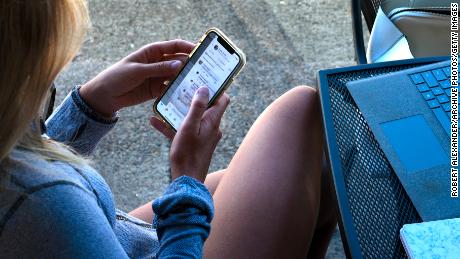(CNN Business)Instagram confirms the age of the youngest user, including using artificial intelligence to analyze photos I'm testing a new way to do it. Estimate the age of the user.


Jacksonville, Oregon, June 19, 2019: Young women outside using their smartphones A coffee shop in Jacksonville, Oregon, sitting in. (Photo by Robert Alexander / Getty Images)
"When a new face appears, it analyzes the face's pixel level and then spits out a number — age estimation with confidence," Dawson said. Once the quote is complete, Yoti and Instagram will remove the selfie video and the still images taken from it.
Checking a user's age can be a daunting task for tech companies. This is because many users may not have a government-issued photo ID card that they can verify.
Karl Rikanek, a professor at the University of North Carolina at Wilmington and director of the Face Aging Group Research Lab at the school, believes Yoti's technology is a great application for AI.
"Trying to protect children is a worthwhile effort," he said.
While such technologies can be useful for Instagram, it can be difficult to accurately estimate age from photos. Adolescents (which change the structure of a person's face) and skin tone, says Rikanek. And gender.
This means that there are actually many errors, said an assistant professor at Western University in Ontario. One Luke Stark said. Canada studying the ethical and social impacts of AI. "In any case, we still have a mean absolute error of one to one and a half years," he said.
The results were mixed. For some reporters, the estimated age range was on target, but for others it was years off. For example, one editor is actually in his mid-30s and is estimated to be between the ages of 17 and 21.
Among other issues, Stark is also concerned that technology contributes to so-called "surveillance creep."
"It's certainly a problem, because it is conditional on people assuming they will be monitored and evaluated," he said.


